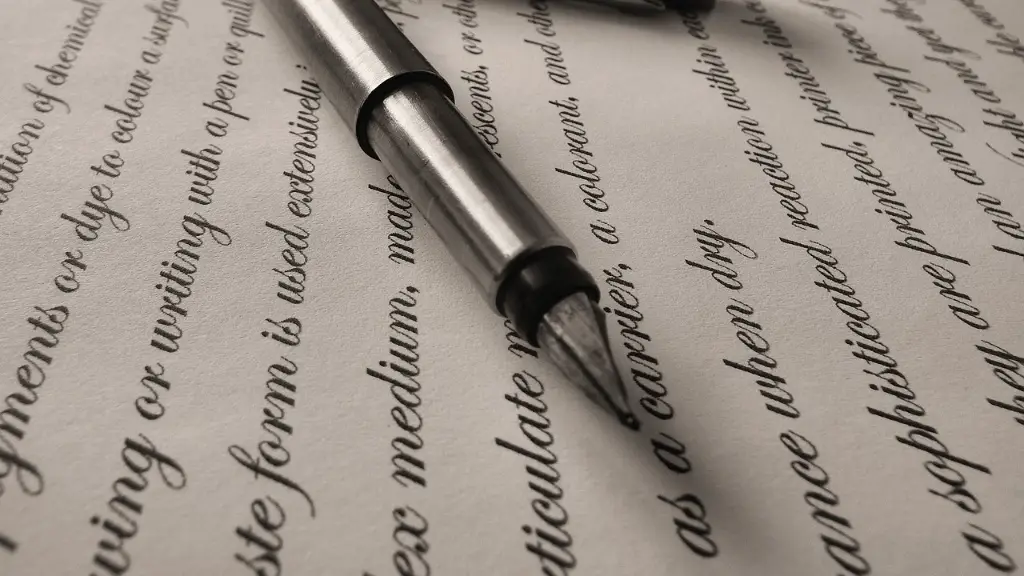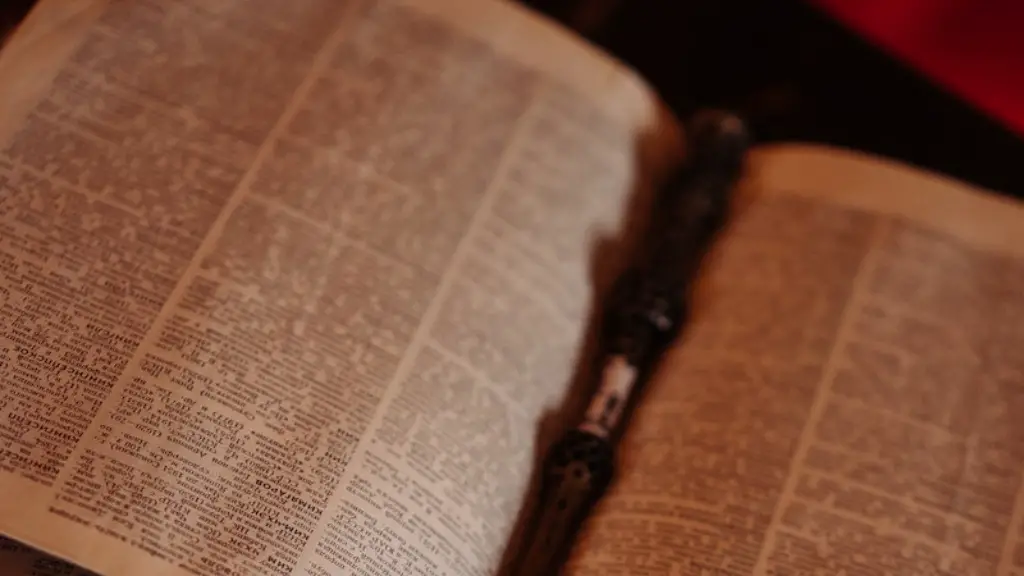How to write a thesis statement for poetry analysis
Poetry analysis can be a daunting task for anyone, even seasoned writers and academicians. To help guide you through the process of writing a thesis statement for poetry analysis, there are a few key steps that you need to consider. The process can be broken down into five easy to understand steps so you can produce a well-crafted thesis statement that can be used to effectively write a full essay. The process starts by learning about the author, analyzing the poem’s structure, and researching the background of the poem.
Know Your Poet
The first step in writing a thesis statement for poetry analysis is to learn as much as you can about the poet. Learning about your poet’s style, believes, and intentions can help you gain a better understanding of the poem. It can also give you inspiration for your thesis statement. Focus on what the poet is trying to convey in the piece. Research the poet’s biography and any other related literary works that he or she may have written.
Also, take note of the time period in which the poem was written. Historical context is often an important part of a poet’s work and can help to shed light on the intentions of the poem. Understanding these elements of the poem can help to create a more meaningful thesis statement. It can also allow the reader to see how the poem fits into the greater context of the poet’s works.
Analyze the Poem
The next step in writing a thesis statement for poetry analysis is to analyze the poem. Analyzing the poem allows you to understand the poem’s structure, themes, and identify key words. As you analyze the poem, consider the tone and imagery of the piece. Identify any symbols that might be present. Pay close attention to the meter, rhyme, and stanzas used by the poet.
By thoroughly analyzing the poem you can uncover important aspects of the poem’s writing that should be highlighted in your thesis statement. This analysis can also provide you with insight into the poet’s style and thought processes. Make sure to note any questions that arise during your analysis that could help you to further develop your thesis statement.
Research the Poem
Once you have a better understanding of the poem’s structure, themes, and author, you should begin researching the poem. Do some research into any cultural, philosophical, or theological symbols in the poem, as well as the poem’s possible historical context. Go through the poem line by line, examining any personifications, metaphors, or allusions used by the poet. Take the time to research any allusions or symbols used in the poem.
Finding critical reviews and scholarly articles about the poem can also provide you with important information about the poem that can help you to create a thesis statement. This research can also help you to understand the perspective of the poem’s creator.
Formulate the Thesis Statement
Once you have a thorough understanding of the poem, it’s time to formulate the thesis statement. Start by summarizing the main points that you found during your research, analysis, and reading of the poem. Summarize the main themes, symbols, and other critical aspects of the poem. Use these points to help you develop a single statement that goes beyond simply summarizing the poem.
Formulate a statement that explores the poet’s intent and ideas behind the poem. Focus on how these points are woven into the poem to create a unique, meaningful statement. The thesis statement should be concise, but still reflect the main points of the poem.
Revise the Thesis Statement
The last step in writing a thesis statement for poetry analysis is to revise the thesis statement until it is clear and concise. Take the time to look over the statement and make sure it is an accurate representation of the poem. The statement should not be too general, vague, or difficult to understand.
Ensure that your thesis statement reflects the main ideas of the poem and proofread your statement for any spelling or grammar errors. Once you are satisfied with your statement, you should incorporate it into the introduction of your essay.
Poetry Analysis Techniques
When beginning a poetry analysis, it is important to conduct a close reading of the poem to gain a better understanding of the text. This can be done by carefully examining the various elements of the poem. Some key elements to consider during a close reading include the speaker or narrators, figurative language, repetition, and rhyme scheme.
In addition, look for any possible historical context or underlying messages in the poem. Lastly, consider the poet’s use of symbolism, meter, and allusions when conducting a thorough analysis. By understanding the elements of poetry and taking the time to conduct a thorough analysis, you can easily create a meaningful thesis statement that can be used to effectively write a full essay.
Interpretive Analysis
Interpretive analysis looks for the deeper meaning behind a poem. It attempts to uncover what the poet is trying to convey through his or her work. To conduct an interpretive analysis, focus on the poem’s structure, imagery, and other elements. Consider the language used in the poem and look for any shared themes, ideas, or sentiments.
In addition to the figurative language used in the poem, look at how the speakers, narrators, and characters within the poem interact. Drawing connections between the poem and its underlying themes can help to bring a deeper understanding of the poem to the surface. By taking the time to conduct an interpretive analysis, you can gain a better understanding of the poem and form a more meaningful thesis statement.
Literary Themes
Many poets use recurring literary themes in their work. Some of the most common literary themes in poetry include love, nature, death, and time. In addition to these, poets also use themes surrounding war, religion, identity, and more. By looking at the common themes of the poem, you can get a deeper understanding of the poet’s intent.
Consider the context of the poem to help you find the surrounding themes. Look for any religious or political messages in the poem, as well as any underlying emotions that the poet is attempting to convey. By understanding the poem’s themes, you can create a more meaningful thesis statement.
Symbolism
Symbolism is a common element used in poetry. Symbols can be words, images, or concepts that stand for or represent something else. Symbolism can be used to represent larger themes in the poem or to help convey a certain emotion or feeling. Look for any symbols throughout the poem, paying special attention to which symbols the poet focuses on the most.
Symbols can take on many forms and can have different meanings for different readers. Consider the context of the poem and the time period in which it was written. Think about the meaning of the symbol in the context of the poem and what the poet is attempting to communicate. Analyzing symbolism within a poem can help to form a more meaningful thesis statement.
Conclusions
In conclusion, writing a thesis statement for poetry analysis can be a daunting task. However, by following these five steps you can break the process down into manageable pieces. Start by learning as much as possible about the poet and the poem, then analyze and research the poem. Once you have a better understanding, begin to formulate and revise your thesis statement. By the end of the process, you will have an effective thesis statement that can be used to write a full essay.





